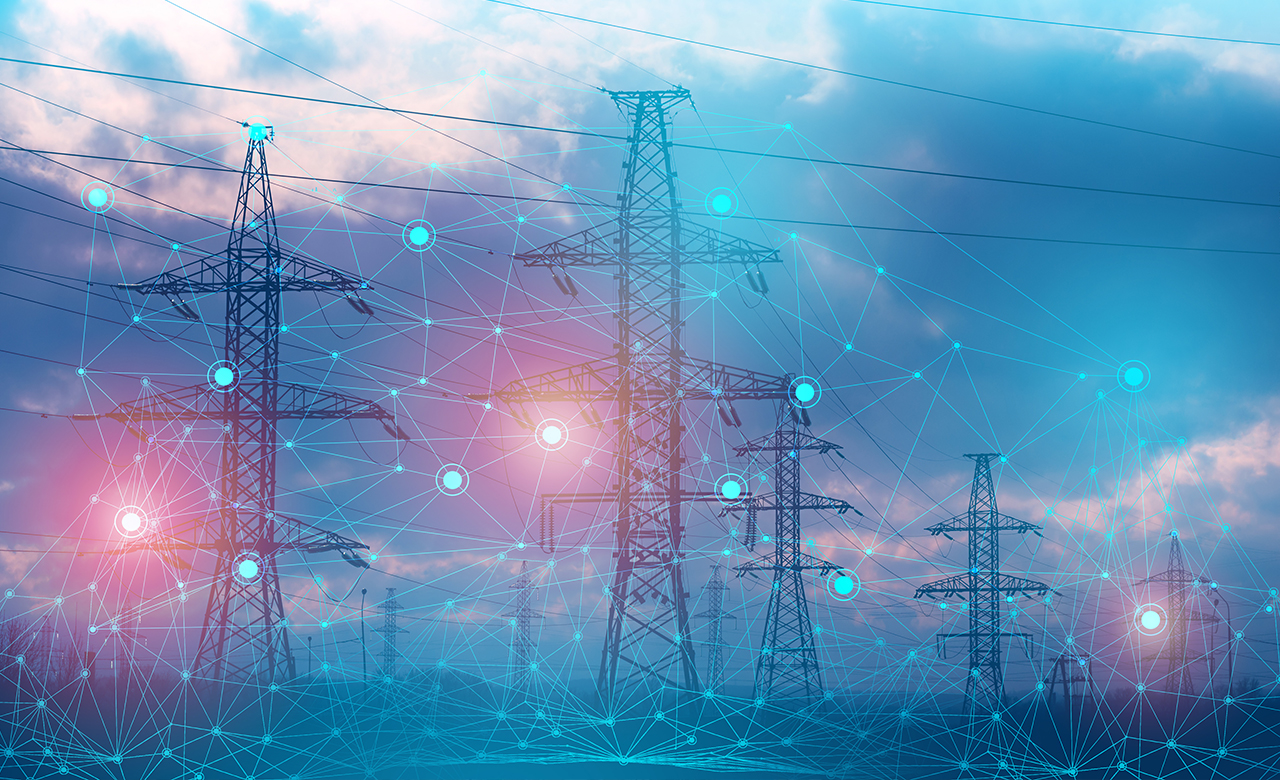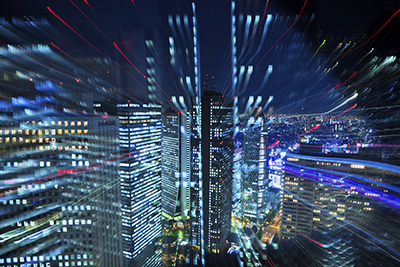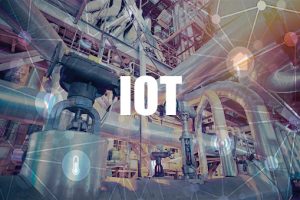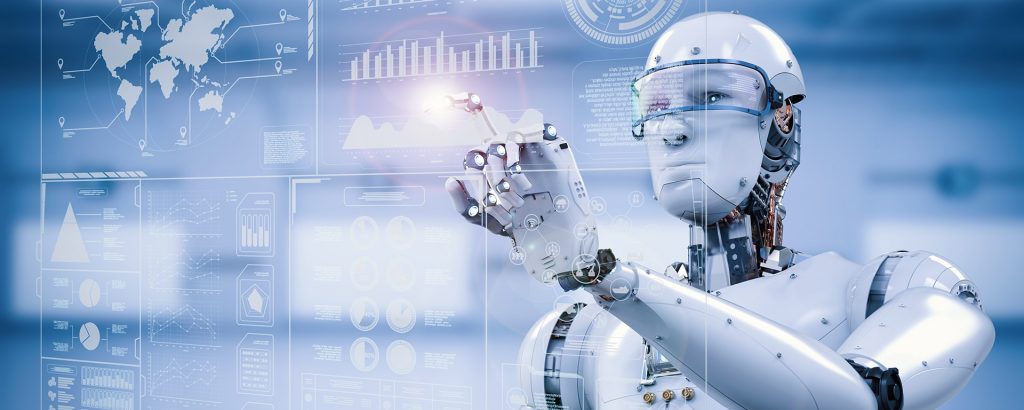
The Utilities and Energy industries are no different. As more businesses are realizing the technology’s potential, digital transformation in the utility industry is gaining more traction but at the same time it also comes with some key challenges.
1) Extreme weather events have become more prevalent in the past decade, often highlighting the vulnerability and lack of preparedness of utilities to deal with natural emergencies
2).Aging pipeline infrastructure costs water companies an annual loss of 126 billion cubic meters of water, whereas the outdated and overwhelmed power grids can no longer cope with the increasing demands of the modern world for electricity
3).Gas utilities, on the other hand, must address a persistent issue: gas leaks which pose a grave threat to human and environmental health alike.
Below we’ll explore and discuss how IoT, ML, AI, and RPA can bring about drastic changes in utilities.

IoT Applications in Utilities
Utilities were one of the first major industries to embrace IoT when they introduced commercial smart meters in the United States and Europe. In doing so, they were able to obtain accurate data in real-time, eliminating costly technical problems such as data loss, data sharing, and poor data management. Over the past few years, new trends have intensified, particularly in electricity, water, and natural gas services.
Electricity Domain Perspective
According to OECD, the world’s electricity consumption grew by 4.0% in 2018. About 20% of this energy is used for lighting, whereas the industrial sectors continue to be the largest consumers of electricity. This increase puts additional pressure on the already overwhelmed electricity grid and strengthens the negative impact of the energy sector on climate change.
A broader application of the Internet of Things can help lessen the environmental footprint of this industry, reduce costs and improve energy efficiency. Through its network of temperature, humidity, and light sensors, IoT can collect and transmit data in real-time. This is extremely useful for real-time data analysis when monitoring consumer’s energy use patterns. Temperature sensors can detect the best time of day to turn on/off heating and cooling systems. Similarly, light sensors may be used to automatically increase or decrease light intensity depending on natural lighting conditions.
Besides the development of smart thermostats such as Nest or Hive allows owners to monitor their energy consumption, save energy, and lower their electricity bills. Smart thermostats can be remotely controlled using a smartphone, tablet or voice assistant, enabling homeowners to program their thermostats based on their daily schedule. With IoT, the electricity sector is one step closer to a smart grid system.

Gas Domain Perspective
Natural gas serves primarily as a source of heating and energy production. Global demand for natural gas has risen steadily over the past decade. This industry is heavily affected by catastrophic losses caused by leaks, pressures, spills, and thefts, which costs them about $10 billion annually.
The deployment of smart IoT sensors allows utilities to remotely monitor their wells, pipelines, and reservoirs and respond quickly to spills or other mechanical damages. These smart sensors are installed in pumps, pipelines, and wells, to detect the temperature, dynamic pressure, and vibrations experienced by natural gas, thus, enabling gas companies to significantly reduce the risk of gas leaks, spills, calamitous accidents, and environmental catastrophes.
Water Utilities Domain Perspective
It is estimated that 1.1 billion people around the world do not have access to clean, potable water, and by 2025 more than two-thirds of the world’s population will be affected by water scarcity. As previously mentioned, aging pipelines and water leaks cause massive water losses.
Using water quality and leakage detection, IoT sensors significantly reduce water loss and ensures that consumers have unrestricted access to high-quality drinking water. Moreover, IoT appliances can monitor water sources in homes and buildings and as soon as water leaks are detected, this information is transferred into the cloud and to the consumer via an SMS or phone call. As a result, utilities can identify and repair the water leak source(s) in record time.

Machine Learning and Artificial Intelligence in Utilities
Machine learning and AI are the pillars of the current digital transformation that spans all major industries. AI and ML are especially attractive to the utility industry because of their potential to solve recurring problems such as power outages, customer theft, and unfair billing. Furthermore, machine learning can also be used to predict customer behavior and consumption patterns that utilities can use to deliver customized services.
Power Outages
Power outages are a source of concern to utilities and consumers alike due to significant disruptions and tremendous economic losses that they cause. Extreme weather conditions and uncontrolled vegetation are major factors contributing to power outages. By applying machine learning to meteorological and vegetation data, vulnerable areas could be easily predicted, allowing utility companies to allocate teams of engineers and experts to address these problems, thus, preventing future incidents from happening.
Non-technical Losses
Using data generated by smart meters will allow utilities to compile consumption profiles for each household to monitor notable and suspicious changes in water or electrical energy consumption. Not only does this detect fraudulent behavior, but it also identifies instances of incorrect billing. Utilities can also use these consumption patterns to raise consumer awareness about energy, gas, and water conservation via incentives; for example, offering lower prices to households that make effective use of their utilities and reduce wasteful behavior. It also enables in-depth market analysis, predicting consumer trends, and developing more effective marketing strategies.
Equipment Maintenance
Electricity and gas utilities suffer massive production and financial losses from equipment failure. By deploying drones to inspect wells, transmission lines, reservoirs, and pipelines in remote areas, utilities will be able to collect images of their equipment’s condition and surroundings. Machine learning and artificial intelligence algorithms can scan thousands of drone images and spot anomalies. This will help utilities to decide when to perform maintenance services and repair damaged equipment.

Robotic Process Automation (RPA)
The automation of repetitive tasks and processes, previously performed by humans with rule-based software, is known as robotic process automation. Its implementation in the utility industry is still in its early stages, but the innovation it promises is immense. RPA will allow utilities to reduce the percentage of human errors in sensitive services, such as incorrect metering and billing and consumer complaints.
Human errors in capacity metering are a recurring error in this sector, often leading to significant financial losses and reputational damage for utility companies. Automation of this process would drastically reduce overbilling or under-billing, resulting in increased consumer satisfaction. Moreover, robots and bots offer 24-hour availability, which can be extremely helpful in resolving customer problems and complaints at any given time. They may also be used to process error-prone tasks, such as creating new accounts, calculating prices, correcting erroneous billing, and spotting metering errors.
What’s in the future for utilities?
In the long run, the utility industry is poised to undergo a dramatic digital transformation as more companies start embracing machine learning, artificial intelligence, IoT, and robot processing automation. Utilities are also expected to endorse enabling technologies such as cloud computing and geographic information systems (GIS) to a greater extent. GIS mapping is already being used by electrical, water, and gas utility companies to enhance asset management. However, the rate at which these technologies are integrated into the utility sector is completely dependent on their goals and willingness to endorse and invest in them.